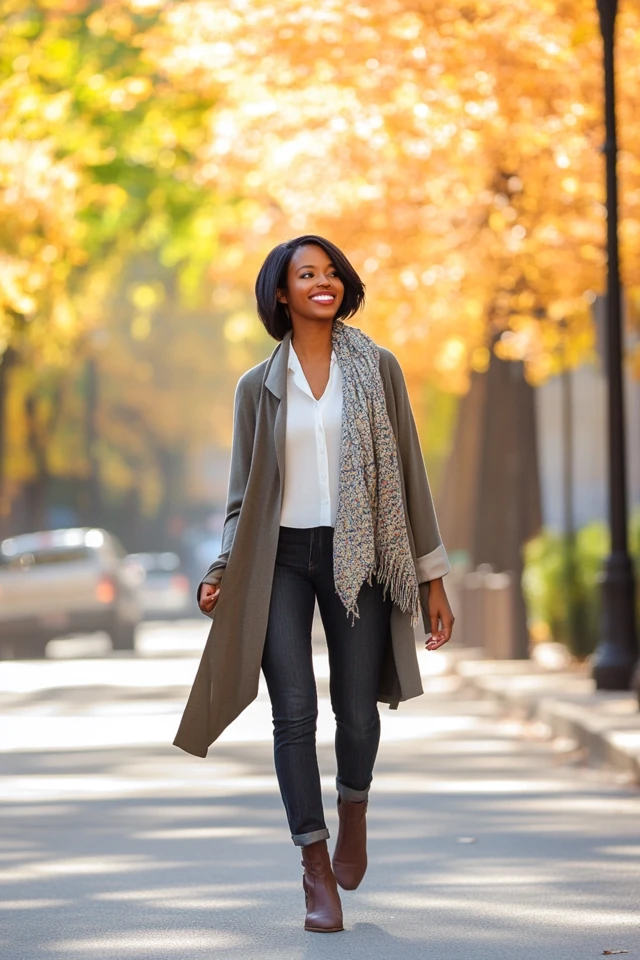As the seasons change, so do the whims of the weather. One day you might be basking in the warmth of a late spring sun, and the next, shivering under an unexpected chill. Transitional weather can be a wardrobe nightmare, but fear not! Mastering the art of layering can keep you comfortable and stylish no matter what Mother Nature throws your way. In this blog post, we’ll explore the essentials of layering for those unpredictable times, share a personal anecdote to illustrate its importance, and provide practical tips to help you navigate temperature swings with ease.
The Rollercoaster of Transitional Weather
Transitional weather—the period between seasons where temperatures fluctuate unpredictably—can be both exciting and frustrating. It’s that magical time when nature prepares for the next big change, but your wardrobe feels like it’s stuck in limbo. Whether you’re experiencing the blossoming of spring or the cooling whispers of fall, layering is your best friend. It allows you to adapt quickly to sudden shifts in temperature, ensuring you’re neither over nor underdressed throughout the day.
About the Author and My Trend Boutique
A Personal Anecdote: The Day the Weather Couldn’t Make Up Its Mind
Let me take you back to a particularly memorable week last spring. It was one of those weeks where each morning brought a new surprise. On Monday, the sun was shining brightly, and I decided to wear my favorite light sundress paired with a denim jacket. By midday, clouds rolled in, and a chilly breeze made me regret not opting for something warmer.
On Tuesday, I tried a different approach—layering a lightweight sweater over my sundress. This time, the day remained relatively stable, but by evening, temperatures dipped, and I was grateful for the extra layer. However, on Wednesday, an unexpected rainstorm drenched the city, and my layering strategy left me shivering and soggy, as I hadn’t anticipated the sudden downpour.
By the end of the week, I realized that my approach to layering needed some fine-tuning. I learned to anticipate not just temperature changes but also other weather elements like wind and precipitation. This experience taught me the value of versatility and preparedness in my wardrobe, and I’m excited to share those lessons with you.
Why Layering Works: The Science Behind It
Layering isn’t just a fashion statement; it’s a practical approach to regulating your body temperature. By wearing multiple layers, you can trap heat, wick away moisture, and provide insulation against the elements. Here’s a quick breakdown of the three essential layers:
- Base Layer: This layer sits closest to your skin and is responsible for moisture management. Materials like merino wool or synthetic fabrics are ideal as they wick sweat away, keeping you dry and comfortable.
- Middle Layer: The middle layer provides insulation. Think of items like fleece jackets or lightweight sweaters that trap heat and keep you warm without adding bulk.
- Outer Layer: This layer protects you from the elements, such as wind, rain, or snow. Waterproof or wind-resistant jackets are perfect for shielding you from unexpected weather changes.
By combining these layers, you create a versatile outfit that can be easily adjusted throughout the day.
Mastering the Art of Layering: Practical Tips
Now that we’ve covered the basics, let’s dive into some practical tips to help you master layering for transitional weather.
1. Start with the Right Base Layer
Your base layer sets the foundation for your entire outfit. Choose materials that are breathable and moisture-wicking to keep you comfortable. Avoid cotton, as it retains moisture and can make you feel damp and chilly. Instead, opt for synthetic fabrics or merino wool, which dry quickly and provide excellent insulation.
Pro Tip: Look for base layers with a snug fit to maximize their moisture-wicking capabilities without restricting movement.
2. Add an Insulating Middle Layer
The middle layer is all about trapping heat. Fleece jackets, lightweight sweaters, or down vests are excellent choices. This layer should provide warmth without adding too much bulk, allowing you to move freely and stay comfortable.
Pro Tip: Consider versatile pieces like cardigans or pullovers that can be easily added or removed as needed.
3. Shield Yourself with a Functional Outer Layer
Your outer layer is your first line of defense against the elements. Depending on the weather, choose a waterproof jacket for rainy days or a windbreaker for blustery conditions. Make sure your outer layer is breathable to prevent overheating when you’re active.
Pro Tip: Look for jackets with adjustable hoods and cuffs to provide additional protection and a customizable fit.
4. Accessorize Wisely
Accessories can make a significant difference in how well you handle temperature swings. Scarves, hats, and gloves can provide extra warmth without the need for bulky layers. On warmer days, lightweight scarves or hats can offer sun protection or a touch of style.
Pro Tip: Choose accessories in versatile colors that complement your wardrobe and can be mixed and matched with different outfits.
5. Embrace Versatility
The key to successful layering is versatility. Choose pieces that can serve multiple purposes and adapt to different weather conditions. For example, a versatile cardigan can be worn as a middle layer on cooler days or tied around your waist when it’s warmer.
Pro Tip: Invest in neutral colors and classic styles that never go out of fashion, ensuring your layers remain stylish throughout the seasons.
6. Pay Attention to Fit
Layering is all about balance. Ensure that each layer fits comfortably over the one beneath it without feeling too tight or too loose. This allows for maximum mobility and ensures that each layer can perform its intended function effectively.
Pro Tip: Try on your layers together before purchasing to ensure a comfortable and flattering fit.
7. Plan for the Unexpected
Transitional weather can be unpredictable, so it’s essential to be prepared for sudden changes. Carry a lightweight, packable jacket or a versatile scarf in your bag to add or remove layers as needed throughout the day.
Pro Tip: Choose items that are easy to store and quick to put on, ensuring you’re always ready for a surprise weather shift.
Building a Layering Wardrobe: Must-Have Pieces
To create a functional layering wardrobe, focus on versatile, high-quality pieces that can be mixed and matched. Here are some essentials to consider:
Base Layers
- Merino Wool T-Shirts: Perfect for moisture-wicking and temperature regulation.
- Long-Sleeve Tops: Ideal for cooler mornings and evenings.
- Lightweight Leggings or Tights: Great for added warmth without bulk.
Middle Layers
- Fleece Jackets: Provide excellent insulation and are easy to layer.
- Cardigans or Sweaters: Versatile pieces that can be dressed up or down.
- Down Vests: Offer lightweight warmth without restricting movement.
Outer Layers
- Waterproof Jacket: Essential for rainy days and wind protection.
- Windbreaker: Lightweight and perfect for blustery conditions.
- Trench Coat: Stylish and functional for varying weather scenarios.
Accessories
- Scarves: Add warmth and a touch of style.
- Beanies or Hats: Keep your head warm and complement your outfit.
- Gloves: Essential for colder days and sudden chills.
Style Tips for Layering Without the Bulk
Layering doesn’t have to mean piling on bulky clothing. Here are some style tips to help you layer effectively while maintaining a sleek and polished look:
1. Choose Slim-Fitting Layers
Opt for slim-fitting base and middle layers to minimize bulk. This allows you to add multiple layers without feeling restricted or overwhelmed by fabric.
2. Stick to a Cohesive Color Palette
Using a cohesive color palette makes your outfit look intentional and stylish. Neutral colors like black, white, gray, and beige are versatile and can be easily mixed and matched with brighter accents.
3. Play with Textures
Incorporating different textures adds depth and interest to your layered outfits. Mix materials like knits, denim, and leather to create a visually appealing ensemble.
4. Balance Proportions
Balance the proportions of your outfit by pairing loose outer layers with fitted inner layers, or vice versa. This creates a flattering silhouette and prevents your outfit from looking too boxy or shapeless.
5. Use Accessories to Add Flair
Accessories like statement necklaces, bold scarves, or stylish hats can elevate your layered look and make it more personalized. They also provide an easy way to transition your outfit from day to night.
Picture Gallery

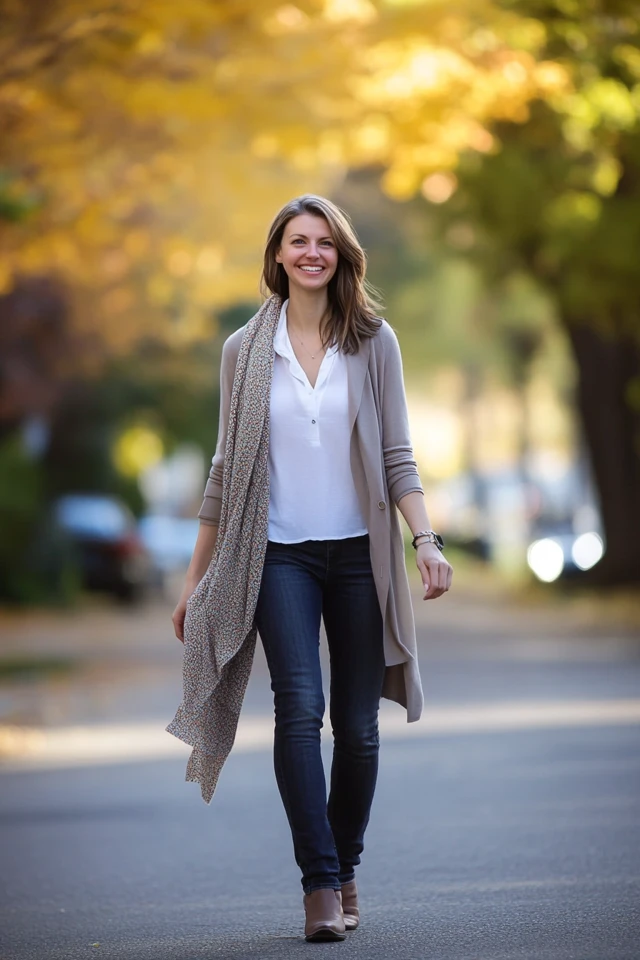

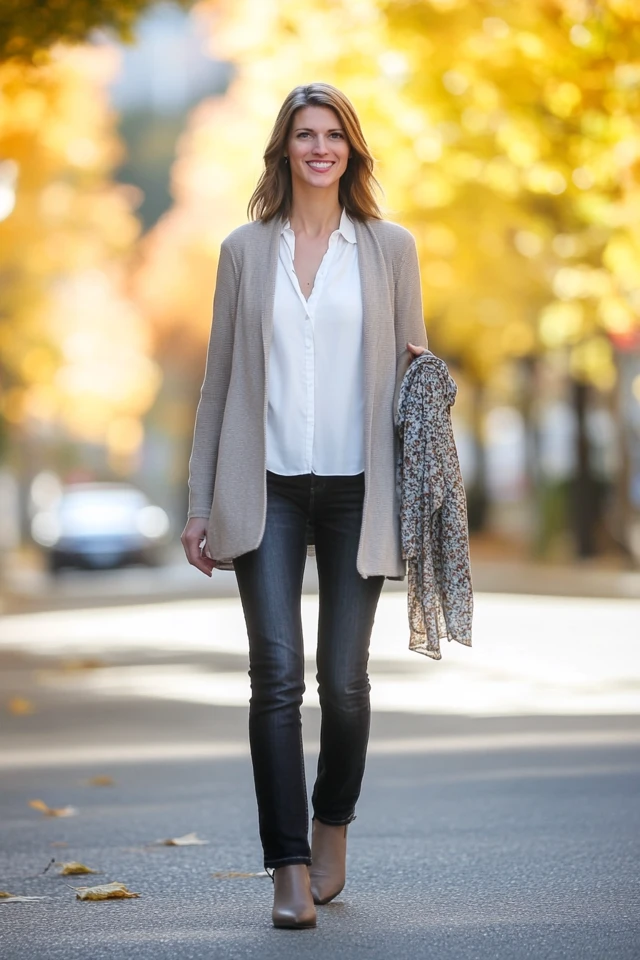
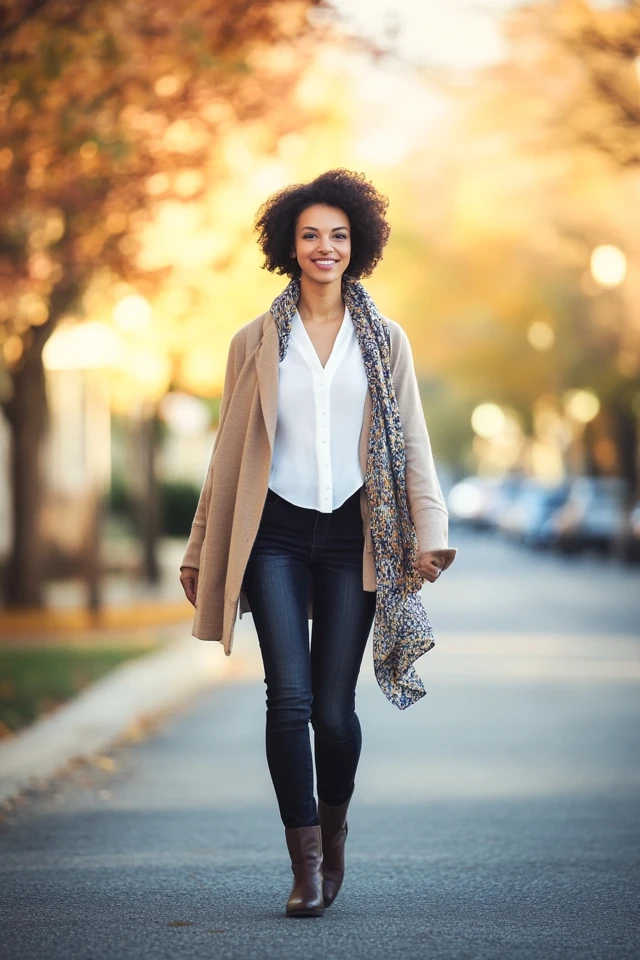
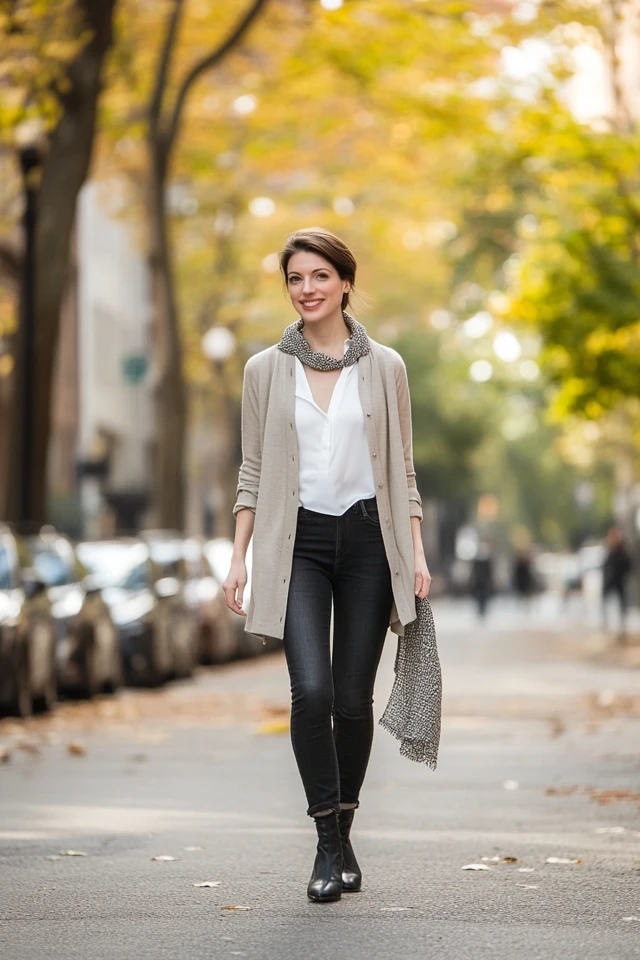

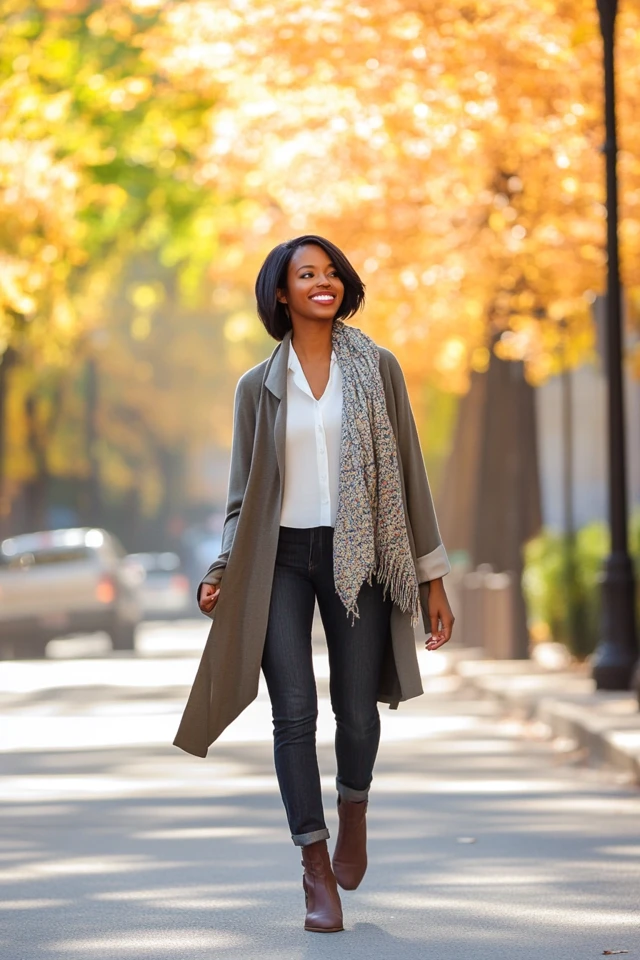
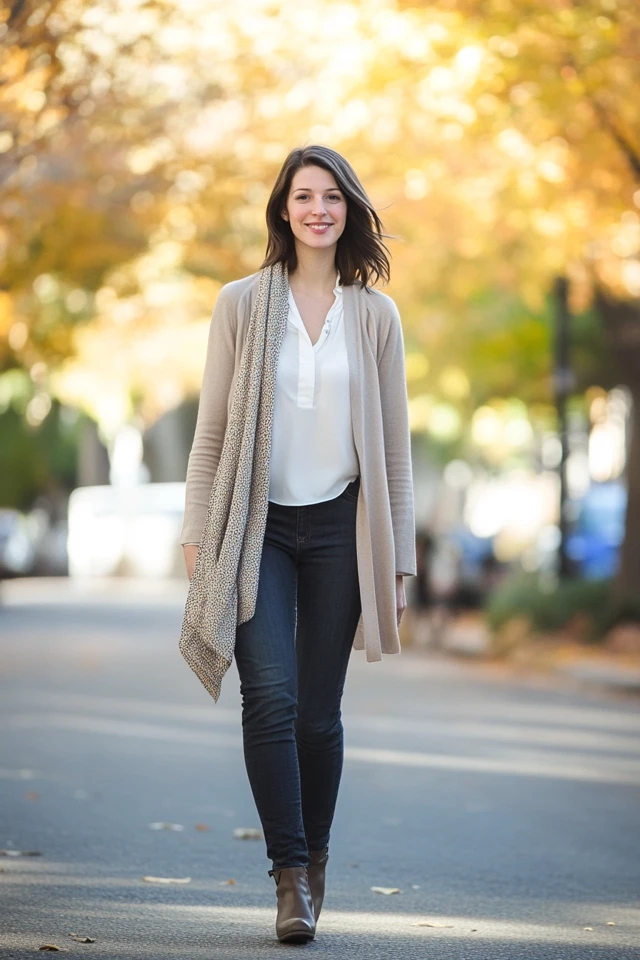

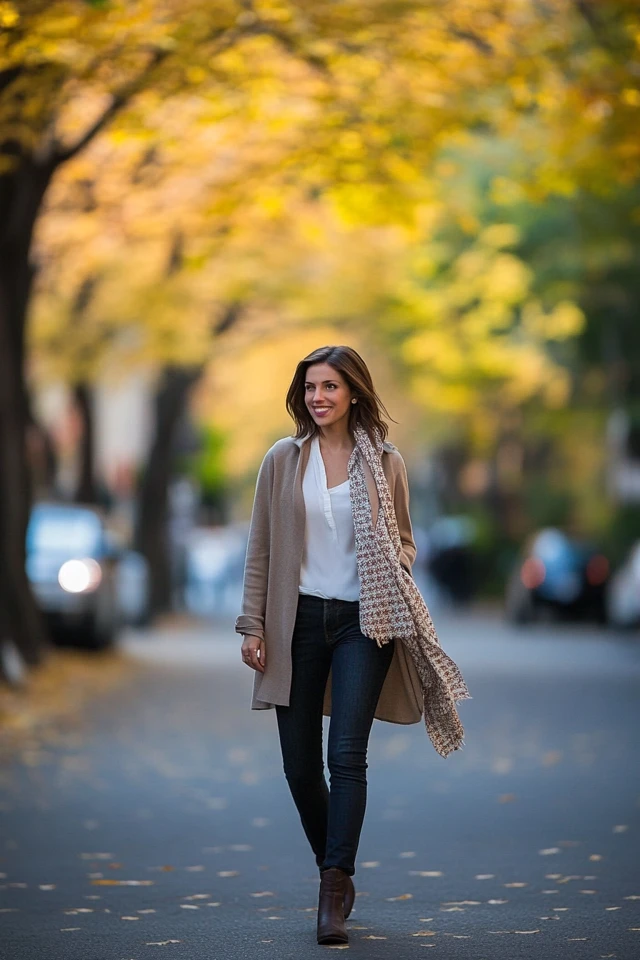
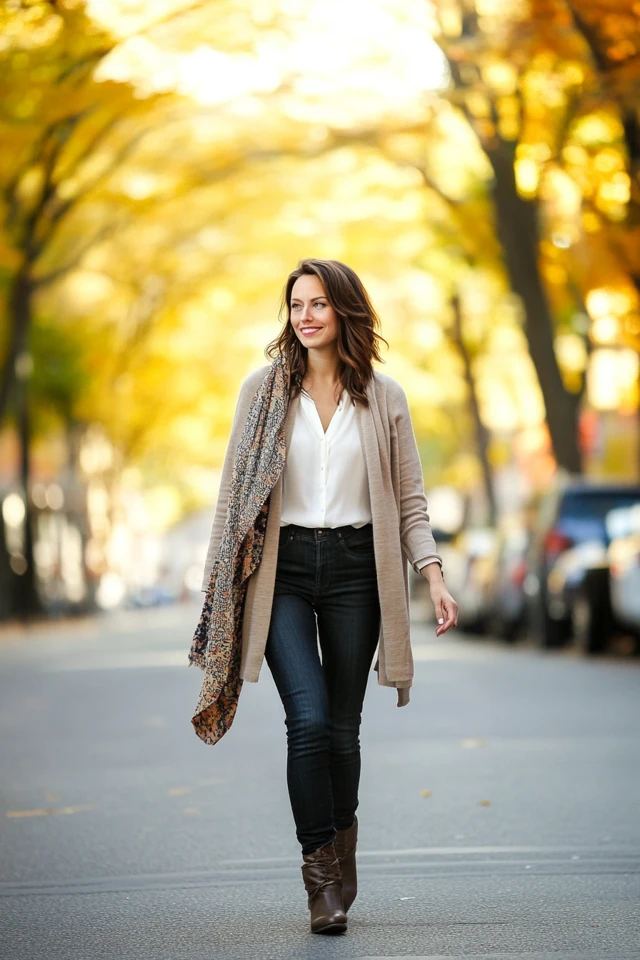
Adapting Layering Techniques for Different Activities
Whether you’re heading to the office, going for a hike, or enjoying a casual day out, layering can be adapted to suit various activities. Here’s how to tailor your layering strategy to fit your lifestyle:
For the Office
Opt for polished layers that maintain a professional appearance. A tailored blazer over a lightweight blouse, paired with slim-fit trousers, strikes the perfect balance between warmth and sophistication.
Pro Tip: Choose layers in neutral tones and high-quality fabrics to ensure a sharp, cohesive look.
For Outdoor Adventures
When engaging in outdoor activities, functionality is key. Layer breathable, moisture-wicking fabrics to stay dry and comfortable. A lightweight fleece or softshell jacket provides insulation, while a waterproof outer layer protects against the elements.
Pro Tip: Look for layers with features like zippered pockets and adjustable cuffs to enhance functionality.
For Casual Outings
Embrace a relaxed approach to layering with comfortable and stylish pieces. A cozy cardigan over a casual tee, paired with jeans and sneakers, offers a laid-back yet put-together look.
Pro Tip: Incorporate playful patterns or vibrant colors to add personality to your casual layered outfits.
Sustainable Layering: Eco-Friendly Choices
Incorporating sustainability into your layering strategy not only benefits the environment but also adds a timeless quality to your wardrobe. Here are some eco-friendly layering tips:
1. Invest in Quality Basics
High-quality, durable pieces last longer and reduce the need for frequent replacements. Choose timeless styles that remain fashionable across seasons.
2. Opt for Natural Fibers
Natural fibers like organic cotton, wool, and linen are more sustainable and biodegradable compared to synthetic materials. They also offer better breathability and comfort.
3. Shop Secondhand or Vintage
Thrift stores and vintage shops are treasure troves for unique, sustainable layering pieces. Not only do you find one-of-a-kind items, but you also support eco-friendly fashion practices.
4. Care for Your Clothes Properly
Proper maintenance extends the life of your layered garments. Follow care instructions, repair minor damages promptly, and store your clothes appropriately to keep them in good condition.
Pro Tip: Learn simple sewing techniques to fix minor tears or replace buttons, saving your favorite pieces from the landfill.
Conclusion: Embrace the Layers
Transitional weather doesn’t have to be a challenge for your wardrobe. By mastering the art of layering, you can stay comfortable, stylish, and prepared for whatever temperature swings come your way. Remember to start with the right base layers, add insulating middle layers, and protect yourself with functional outer layers. Accessorize wisely, choose versatile pieces, and pay attention to fit and proportions to maintain a polished look without the bulk.
Reflecting on my own experiences, I can confidently say that layering transformed my approach to dressing for unpredictable weather. It provided the flexibility I needed to navigate sudden changes and kept me feeling comfortable and confident throughout the day. So, embrace the layers, experiment with different combinations, and enjoy the dynamic beauty of transitional weather.

